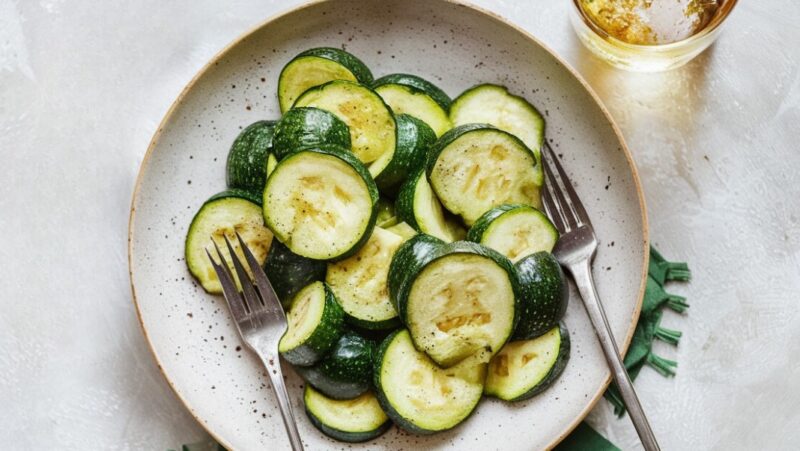Steaming zucchini is a culinary technique that brings out the best in this versatile vegetable, highlighting its natural flavors, preserving its essential nutrients, and maintaining its vibrant color.
The beauty of steamed zucchini lies in its simplicity and the quick transformation from a firm, raw state to a tender, appetizing addition to any plate. Its subtle flavor makes it an excellent canvas for a variety of seasonings, from classic herbs to bold spices, allowing for endless culinary creativity.
Key Takeaways:
- The Zucchini recipe calls for flavorful ingredients like medium zucchini, extra-virgin olive oil, garlic, lemon zest, and juice, kosher salt, black pepper, and optional yellow squash for variety.
- Steaming zucchini preserves its natural flavors, essential nutrients, and vibrant color, making it a healthy choice.
- Zucchini is low in calories but rich in essential vitamins and minerals, such as vitamin C, potassium, and dietary fiber, supporting overall health.
Ingredients Needed
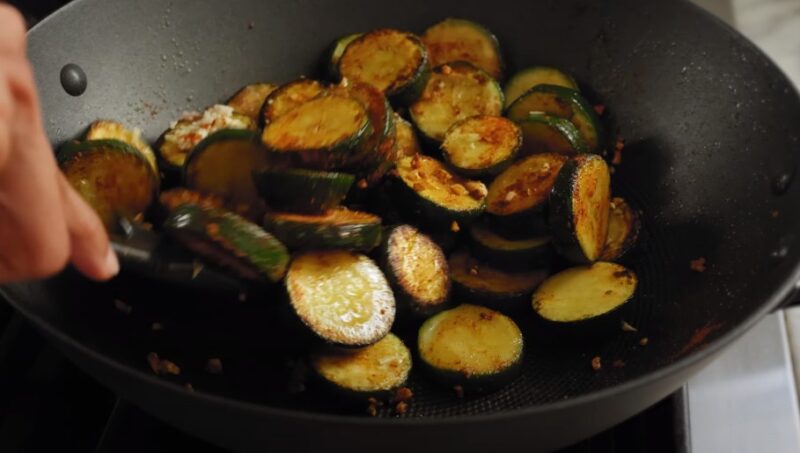
To whip up a mouthwatering steamed zucchini dish, you’ll need a straightforward yet effective combination of ingredients that elevate the natural charm of the vegetable:
- Medium zucchini: Can be sliced into rounds or turned into noodles, based on your preference.
- Yellow squash (optional): Adds color and variety, pairing well with zucchini.
- Extra-virgin olive oil: For a rich depth of flavor.
- Garlic cloves, minced: To infuse the dish with aromatic warmth.
- Lemon zest and fresh lemon juice: For a bright, citrusy accent.
- Kosher salt and freshly ground black pepper: To enhance the zucchini’s sweetness and overall taste.
- Fresh herbs (parsley or basil): For garnish, add a pop of color and a fresh, aromatic finish.
Optional for experimentation:
- Soy sauce (for umami depth)
- Garlic powder (for extra punch)
- Sesame seeds (for crunch)
- Red pepper flakes (for heat)
- Parmesan cheese (for a savory twist)
- Brown sugar (to subtly enhance the natural sweetness)
The foundation of this recipe lies in its simplicity, with medium zucchini serving as the star. Whether you opt for a vibrant mix by including yellow squash or stick to the classic green, the essence of this dish is its adaptability.
The seasoning blend, featuring extra-virgin olive oil, minced garlic, and a zest of lemon, introduces a spectrum of flavors that can be adjusted to your liking. The addition of kosher salt and freshly ground black pepper is crucial for drawing out the inherent sweetness of the zucchini, ensuring each bite is as satisfying as the last.
Garnishing with fresh herbs like parsley or basil not only enhances the visual appeal but also adds a layer of fresh, aromatic flavor that complements it beautifully. While the basic recipe is delightful on its own, the real joy comes from experimenting with additional seasonings to tailor the dish to your taste preferences.
Nutritional Value
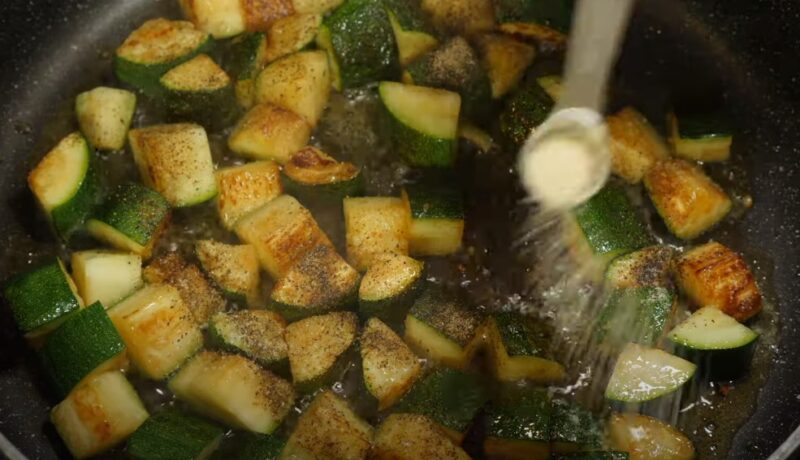
Little is known about zucchini being a nutritional powerhouse. Let us take a look at its nutritional value.
| Nutrient | Amount |
|---|---|
| Calories | 17 kcal |
| Water | 95 g |
| Protein | 1.2 g |
| Carbohydrates | 3.1 g |
| Sugar | 2.5 g |
| Fiber | 1 g |
| Fat | 0.3 g |
| Vitamin C | 17.9 mg (20% DV) |
| Potassium | 261 mg (6% DV) |
| Vitamin A | 200 IU (4% DV) |
Step-by-Step Cooking Instructions
The process of steaming zucchini is straightforward, yet attention to detail can make all the difference in achieving the perfect texture and flavor. Here’s how to transform simple zucchini into a delectable side dish:
1. The Preparation
Begin by thoroughly washing the zucchinis under running water to remove any dirt or debris. Trim off the ends and proceed to cut them into uniform slices, about 1/4 to 1/2-inch thick. This uniformity is crucial for ensuring that all pieces cook evenly and at the same rate.
2. Steaming Process
Fill a large pot with about 1-2 inches of water, ensuring there’s enough space between the water and the steamer basket to prevent the zucchini from touching the water. Once the water is gently boiling, place the slices in the steamer basket, spaced evenly to allow for optimal steam circulation.
Cover the pot with a lid and let it steam for 5-7 minutes. The key here is to achieve fork-tender zucchini that retains its vibrant color and crisp texture, so be mindful not to overcook.
3. Seasoning
While the zucchini steams, prepare the dressing. In a small bowl, whisk together the extra-virgin olive oil, minced garlic, lemon zest, and fresh lemon juice until well combined. This mixture will serve as a flavorful dressing that complements the natural taste.
4. Serving Suggestions
Once steamed to perfection, carefully transfer the zucchini slices to a serving dish. Drizzle them with the prepared dressing, ensuring each piece is evenly coated. Season with salt and pepper to taste, and if desired, garnish with chopped fresh parsley or basil leaves for an added touch of freshness and visual appeal.
Variations and Tips
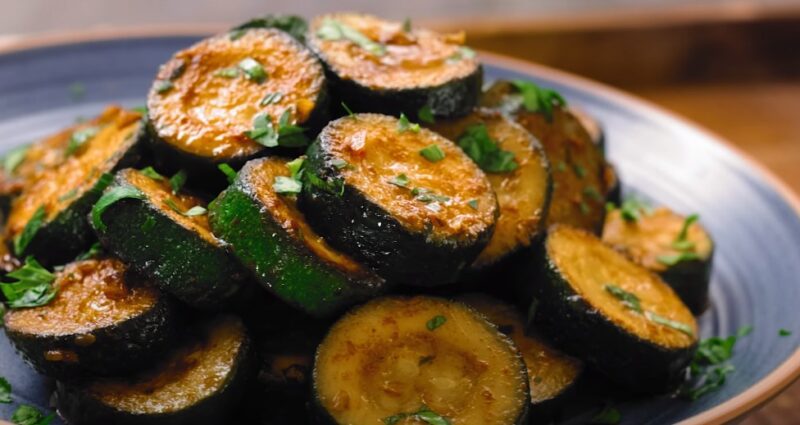
Steamed zucchini is a versatile dish that can be customized in numerous ways to suit your palate. Here are some variations and tips to enhance your streaming experience:
Flavorful Variations
Don’t hesitate to experiment with different seasonings to find your perfect match. A sprinkle of grated Parmesan cheese adds a savory depth, while a dash of crushed red pepper flakes introduces a spicy kick. Dried herbs, such as oregano or thyme, can offer a Mediterranean twist to the dish.
Pasta Substitute
For those looking for a low-carb alternative to traditional pasta, steamed zucchini serves as an excellent base. Top it with your favorite marinara or pesto sauce for a nutritious and satisfying meal. The tender texture of steamed zucchini complements the richness of hearty sauces beautifully, making it a guilt-free indulgence.
Toppings and Enhancements
Elevate your steamed zucchini by adding toppings that introduce new flavors and textures. Toasted pine nuts or sliced almonds can add a delightful crunch, while a drizzle of balsamic glaze brings a sweet and tangy element to the dish. These simple additions can transform it into a more complex and satisfying side.
Storage and Reheating
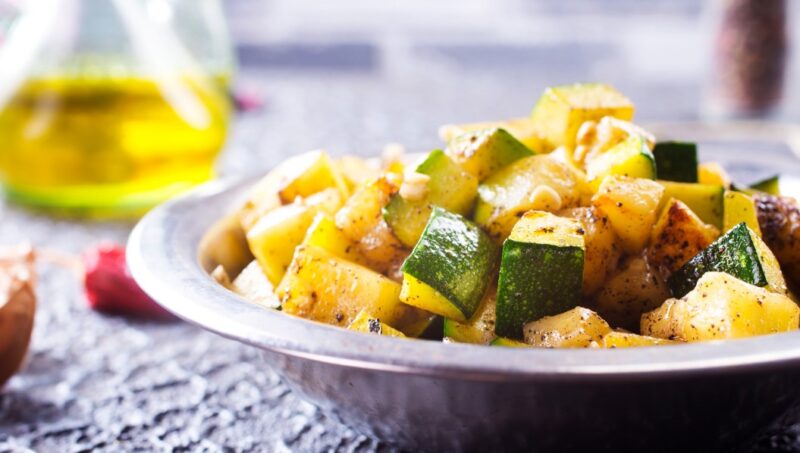
Proper storage and reheating techniques can help extend the lifespan, allowing you to enjoy it as a fresh and tasty side dish for several days. To store leftover, allow it to cool to room temperature before transferring it to an airtight container.
This prevents condensation from forming inside the container, which could make the it soggy. Place the container in the refrigerator, where the zucchini will keep for up to 3-4 days. When it comes to reheating, the key is to do so gently to preserve the texture and flavor of the zucchini.
A microwave can be convenient for steaming and quick reheating, but be sure to use a low to medium power setting and heat in short intervals, stirring occasionally to ensure even warming. Alternatively, reheating the zucchini in a skillet over medium heat with a little olive oil can revive its flavors while preventing it from becoming too soft.
FAQs
Should you salt zucchini before or after cooking?
Salt zucchini before cooking, especially if you’re looking to draw out moisture for recipes like zucchini noodles or fritters. This process, known as “sweating,” helps to remove excess water, concentrating the flavor and improving texture.
Do you rinse zucchini after salting it?
Yes, after salting zucchini to draw out moisture, it’s advisable to rinse it under cold water. This step removes excess salt from the surface, ensuring your dish isn’t overly salty. After rinsing, pat the zucchini dry with paper towels.
Why is my zucchini soggy after cooking it?
Zucchini becomes soggy after cooking if it retains too much moisture during the cooking process or is overcooked. High water content and quick cooking times make it prone to becoming mushy if not prepared correctly. To avoid sogginess, cook it for a shorter time and consider methods that remove moisture, like salting beforehand.
What is the best way to get moisture out of zucchini?
The best way to remove moisture from zucchini is by salting it and letting it sit for 10-15 minutes before cooking. The salt draws out water, which can then be rinsed and patted dry. For recipes requiring drier zucchini, like baked goods or fritters, you can also squeeze it in a clean kitchen towel to extract water.
Summary
Steaming zucchini is a simple yet effective way to enjoy this versatile vegetable. With minimal ingredients and a straightforward cooking process, it’s a dish that can easily be a part of any meal. By following the tips and variations provided, you can customize the recipe to suit your taste preferences and dietary needs. For more interesting blog posts and recipes, visit our website.

